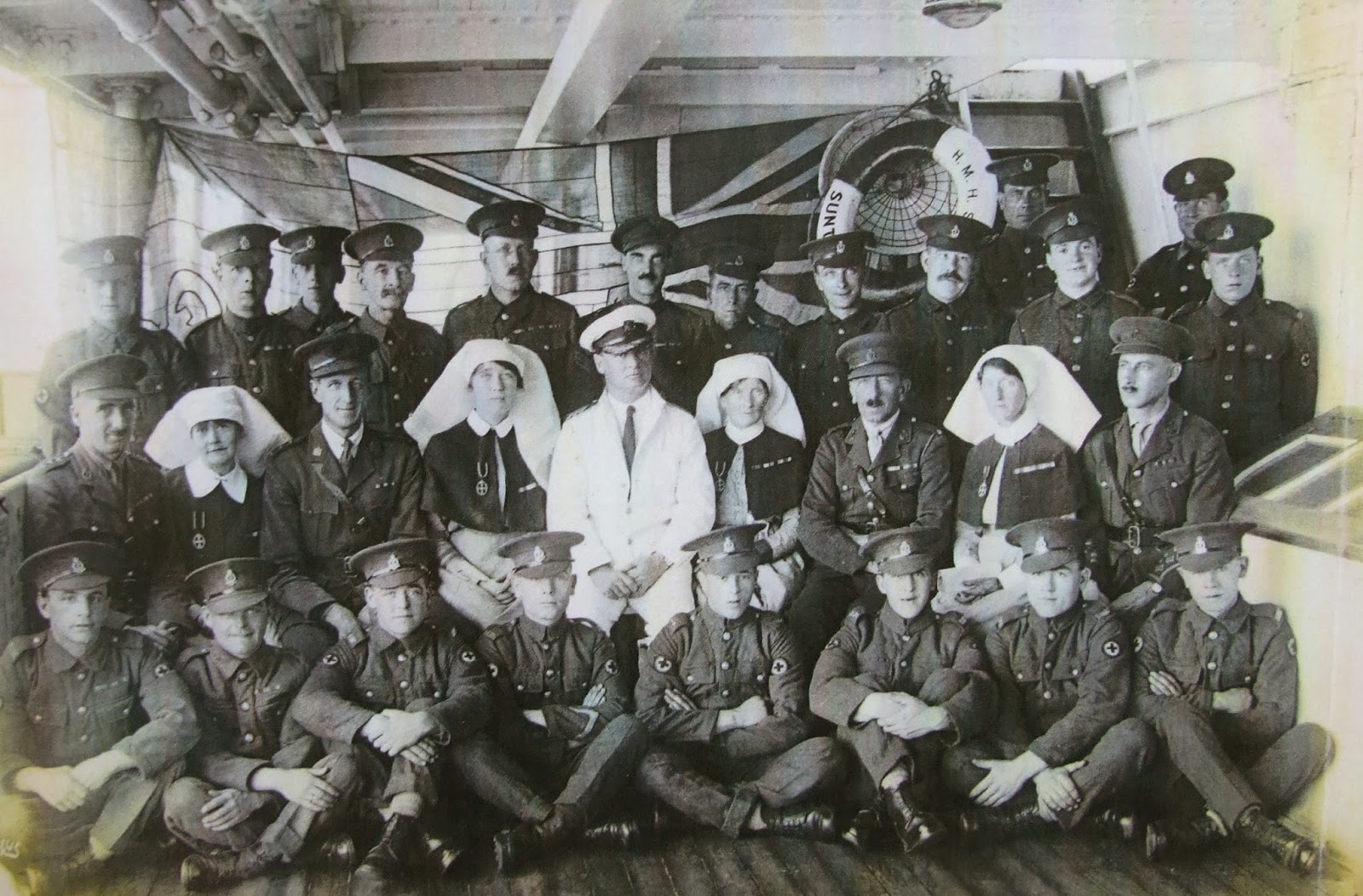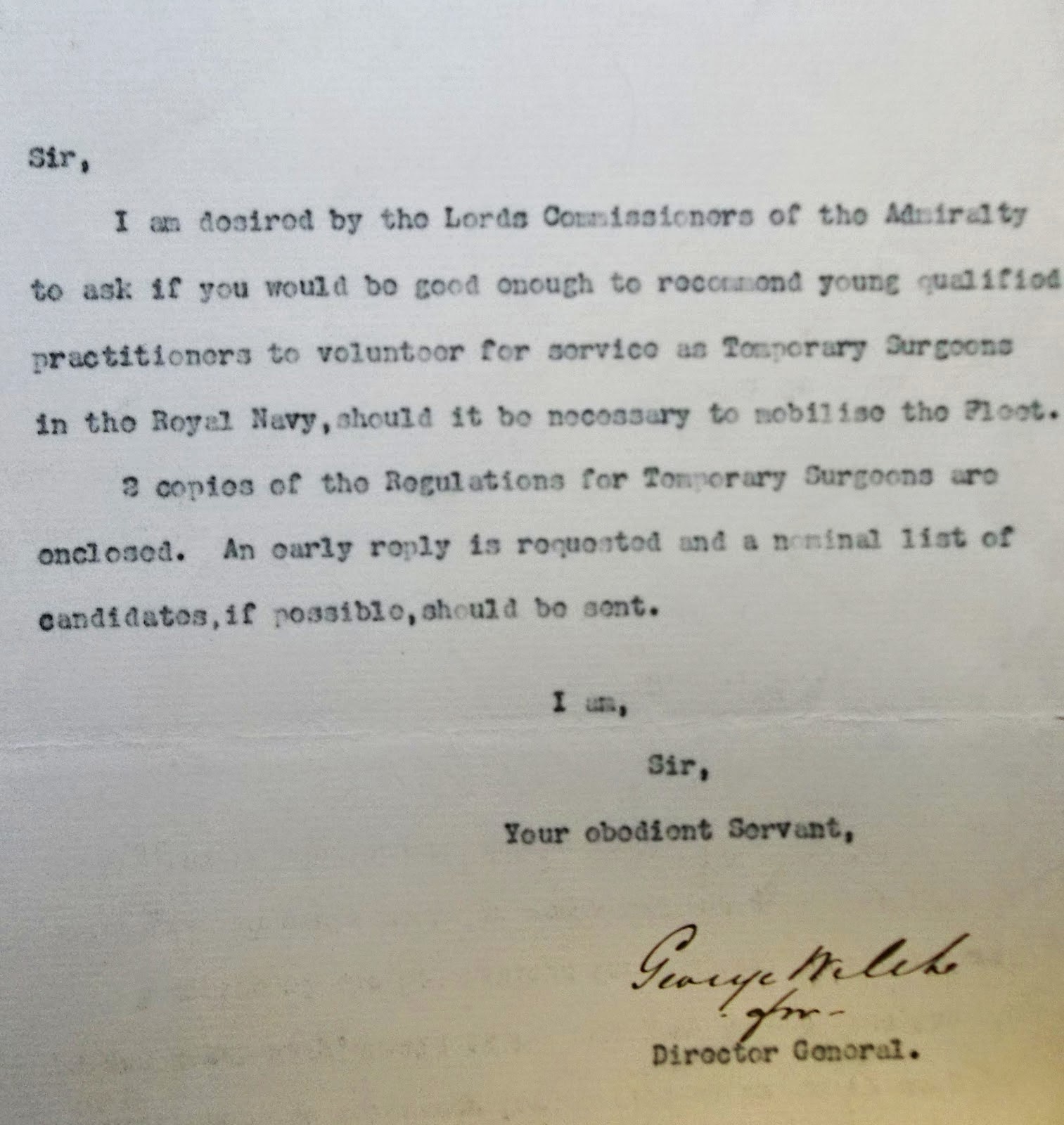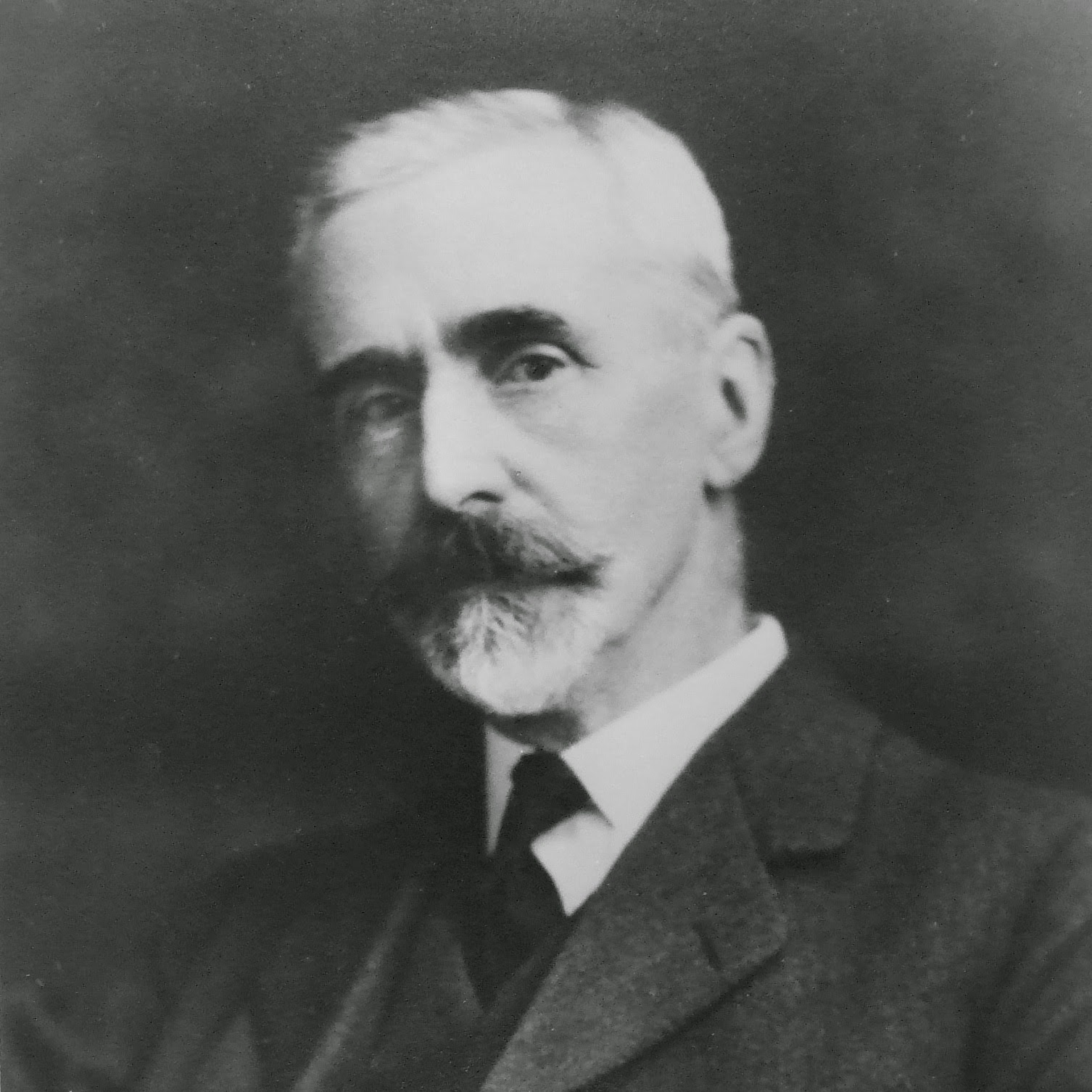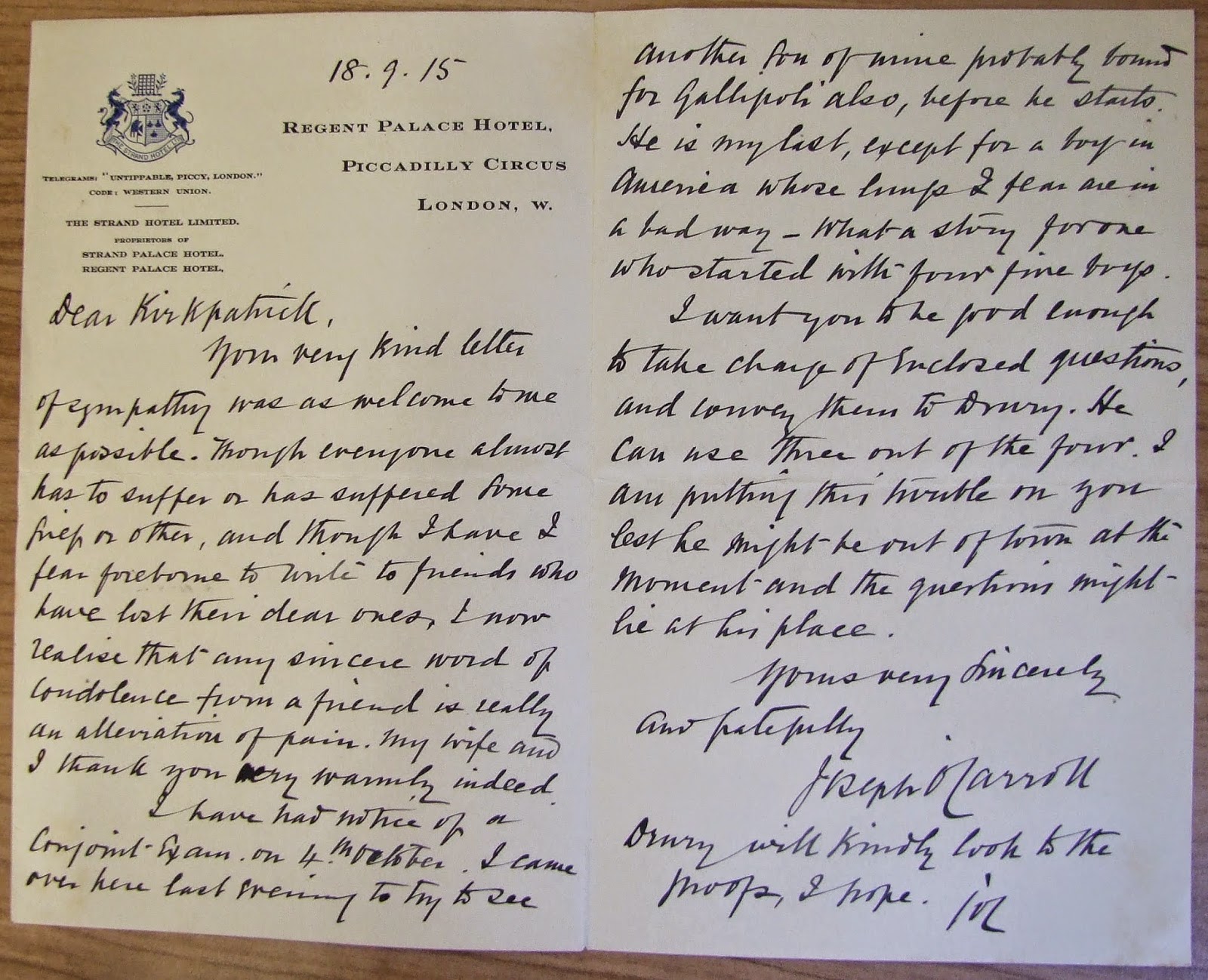RCPI and the Enlistment of Medics at the Start of the First World War
 |
| Photograph of British soldiers from the Royal Army Medical Corps, taken from an Andrew John Horne photograph book |
It is estimated that
approximately 206,000 Irishmen enlisted in the British army during the Great
War of 1914-1918. Of these, approximately 3,000 were medics, 400 of whom were
students. At the beginning of the war, around one-third of doctors in the
British Armed Forces were Irish.
The archival collections of the
Royal College of Physicians of Ireland contain a number of items which show how
medics associated with the College were the target of a British army
recruitment drive. These items include a letter from the Director General of
the British Royal Army Medical Corps and the Royal Navy to the
Registrar and
Dean of the College dated 30 July 1914, two days after Austria-Hungary declared
war on Serbia, and six days before the United Kingdom formally declared war on
Germany on 4 August 1914. In this letter, the Director-General asked the Dean
and Registrar ‘
if you would be good
enough to recommend young qualified practitioners to volunteer for service as
Temporary Surgeons in the Royal Navy, should it be necessary to mobilise the
Fleet’.
 |
Letter from the Director General of the Royal Army Medical Corps to the Royal College of Physicians of Ireland (30 July 1914) (RCPI/2/3/2/14)
|
A similar letter was sent to the College on 1 August 1914 by
Lieutenant-Colonel Charles Henry Burtchaell, an Irish doctor in the Army
Medical Service. In his letter, Burchaell asked the College authorities to provide
information
‘as to the probable number of
Junior Medical Graduates in touch with your School, who would be likely to
accept temporary service in the Army for attachment to the Royal Army Medical
Corps in the event of a national emergency’. In a letter of reply written
three days later on 4 August 1914, however, the Registrar of the College stated
his regret
‘that he is unable to furnish any
names of candidates at the present time’.
 |
Draft address of welcome from the Royal College of Physicians of Ireland to the Lord Lieutenant (RCPI/2/3/2/14)
|
While the College authorities
seemed to have been lukewarm towards army recruitment in the early period of
the War, a change of attitude occurred in the following months and years. An
entry into the College Journal contains the minutes of a meeting of 31 March
1915, at which a draft welcome address from the College to Lord Wimborne, the Lord
Lieutenant of Ireland, was approved by those present. The letter states that:
‘In this great cause
the Fellows, Members and Licentiates of this College are willingly taking their
part both at home and abroad, endeavouring, as far as in them lies, to bring
health and healing to those who have suffered, and to ward off those attacks of
disease which have so often proved the most dangerous enemies of armies in the
field.
The military service of such persons connected to the
College was not without its cost, however. At a meeting of 1 October 1915 it
was stated that ‘the President and Fellows of the Royal College of Physicians
of Ireland desire to convey to their colleagues Dr MacDowel and Dr O’Carroll an
expression of deep sympathy with them on the sad occasion of the death in
action of their brave and gallant sons’.
 |
| Photograph of Dr Joseph O'Carroll (VM/1/1/5) |
The Dr O’Carroll referred to in
this entry was Dr Joseph O’Carroll, a Fellow of the Royal College of Physicians
of Ireland, who was elected President in 1916 for two consecutive sessions. During
the War Dr O’Carroll was consultant physician to the Military Heart Hospital
and to the Red Cross Hospital in Dublin Castle, and, later, the only consultant physician
to the Forces in Ireland, with the rank of Colonel. Dr O’Carroll’s deceased son
was Frank Brendan O’Carroll. Born on 18 July 1895, Frank Brendan was a student
at University College Dublin in 1914, who intended pursuing a career in law. At the outbreak of the war he applied for and was given a
commission with the 6
th Battalion Dublin Fusiliers on 24 September
1914. On 11 July 1915 the 6
th Battalion embarked for action in the
Gallipoli Campaign, arriving at Suvla Bay on 6 August. Frank Brendan was killed
just four days later on 10 August, three weeks after his twentieth birthday. One
of 36,000 killed he has no known grave, but is commemorated on the Helles
Memorial in Gallipoli, Turkey.
In memory of his son, Dr O’Carroll endowed a bed to the children’s ward in the
Richmond Hospital, Whitworth, and commissioned a plaque by Oliver Sheppard to
be placed on the walls of the Richmond.
Image taken from an Andrew John Horne photograph book showing a shell exploding at Suvla Bay
Following the War, Dr O’Carroll
was awarded the OBE in recognition of his services. However, this award came
during the time of Black and Tan atrocities in Ireland in 1920, and Dr
O’Carroll’s nationalist principles forced him to relinquish the honour as a
mark of his disapproval of British Government policy.
 |
Letter from Dr Joseph O'Carroll to Dr TPC Kirkpatrick in which he expresses thanks to Dr Kirkpatrick for his expressions of condolence following the death of Frank Brendan O'Carroll (Kirkpatrick Index)
|
More posts regarding the First World War on the RCPI Heritage Centre blog can be found here.
Fergus Brady,
Project Archivist
Small file of correspondence relating to issues
raised by the First World War (RCPI/2/3/2/14)